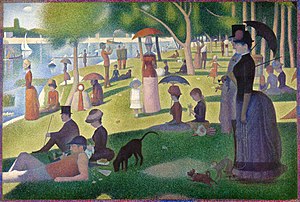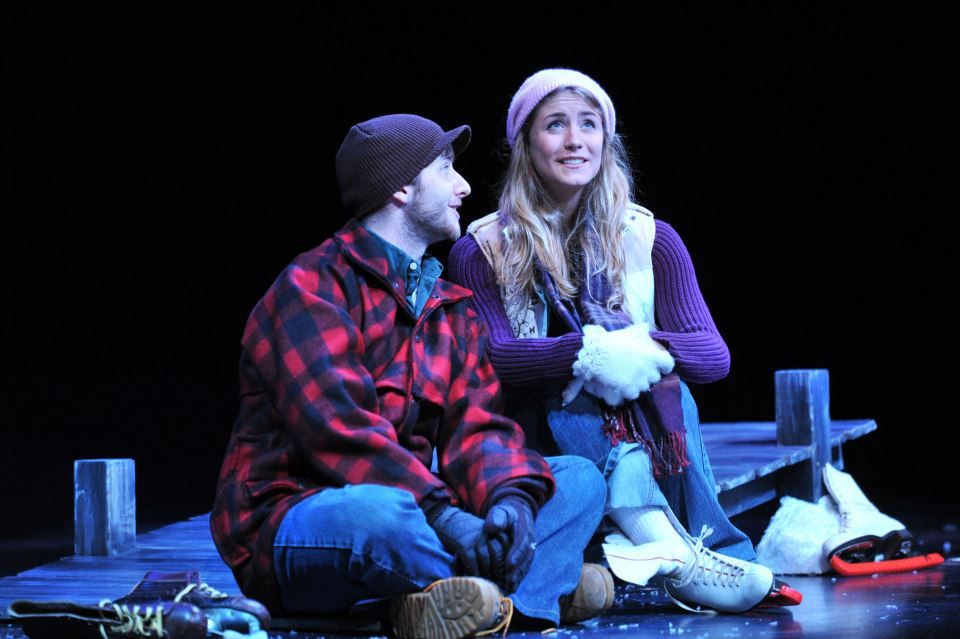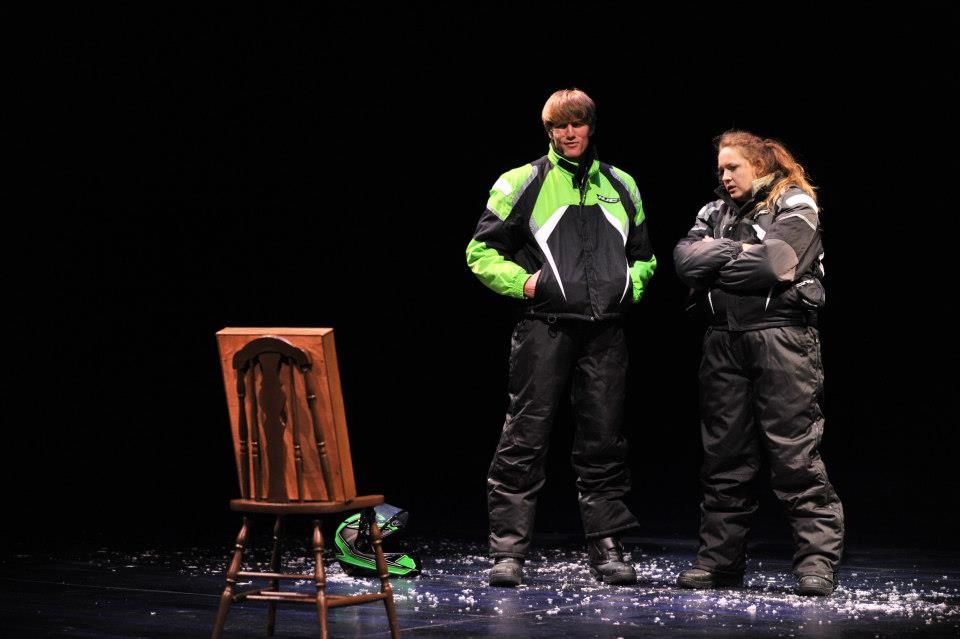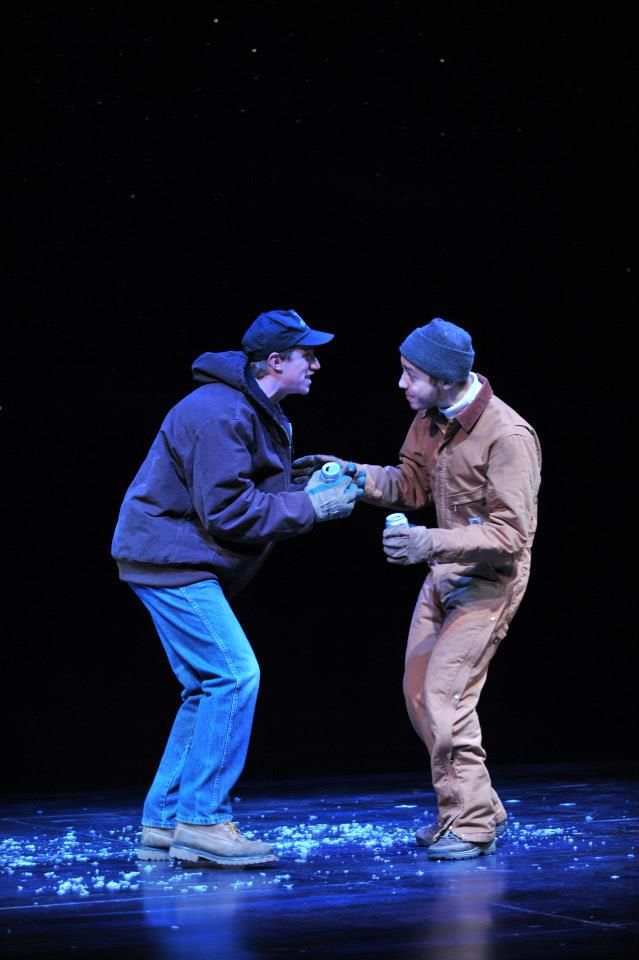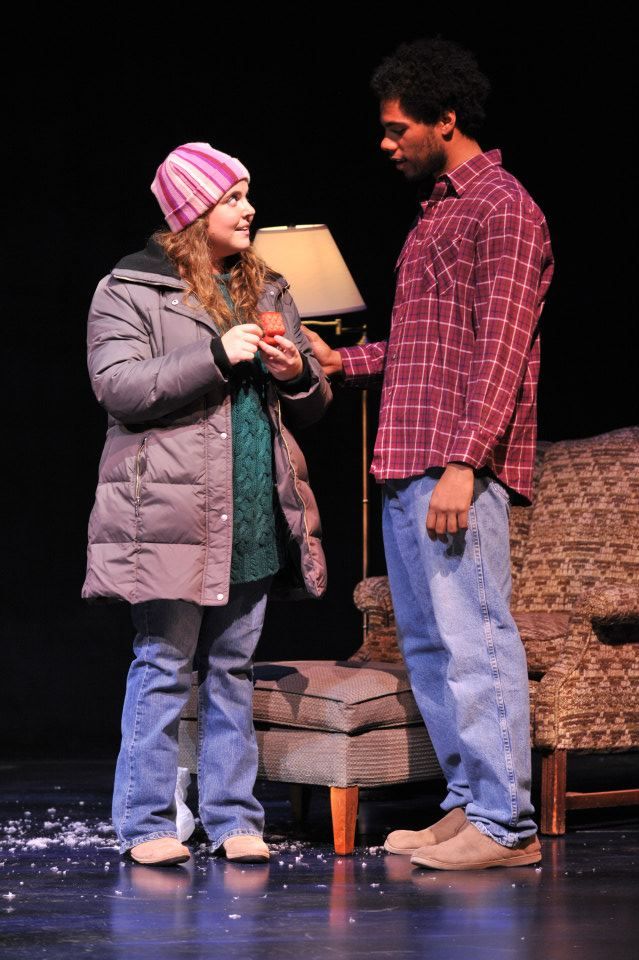It’s always difficult to leave a play with a full sense of what you thought about it. The problem is compounded when you are met with an absurdist play, particularly when it is a monolith like Rhinocéros, filled with layers of meaning, humor, and pathos. This production, courtesy of the Théâtre de la Ville, left me with very conflicting, and yes, absurd, thoughts.
For those unfamiliar, the plot (such as it is) is thus: in a small French town (though admittedly the setting is never named), Bérenger and his friend Jean meet for a drink, when a rhinoceros passes by, running in a full-tilt rampage. The appearance of the rhinoceros is cause for much discussion and argument among Bérenger, Jean, and the other witnesses (each a kind of cartoon of a character). The argument leads to a near fistfight between the two friends, and no one seems to know anything more about the rhinoceros – even after a second one appears (or is it the same one?).
In the next scene, Bérenger returns to his 9-to-5 job at a law office. Everyone is reading newspapers, and discussion of the rhinoceros(es?) is still at the forefront. Some claim they did not exist, others swear to seeing them; but though nothing more is really accomplished, and Bérenger himself, so uninterested at the first sighting, now tries to prove that the rhinoceros was real. Questions, twisting of words, and belligerent challenges cause Bérenger to question not only whether he had even seen a rhinoceros, but the very nature of evidence. The world around him increasingly represents the question, “How can we know anything? Can we trust our senses?”; Bérenger increasingly finds that the answer is “Yes!” The ability to trust one’s own senses is vital if one is to keep one’s sanity, and the first freedom is the freedom to tell the truth as it is.
Meanwhile, the frenzy about the rhinoceroses begins to terrify Bérenger more and more. There is a moment which should have been comical, but which truly struck me dumb: in the office scene, as a rhinoceros rampages outside, everyone loses their head simultaneously and begins hopping about like wild chimpanzees. A moment later, they return to themselves, but the betrayal is irreversible; we’ve all seen the beasts inside the suits. When terror strikes, reason is the first to leave the party.
Everyone around Bérenger “turns” – even Jean, the last person he expected to – leaving him completely alone. Apathetic at first, Bérenger is forced first to confront the reality of the rhinoceroses around him, and then to take a stance. He is unable to join them, even though for a moment he desperately wants to. He is left no choice but to resist them – completely alone – and it is here that the play ends – with Bérenger’s inspiring and terrifying declaration: “I’m not capitulating!”
Ionesco’s play, while originally an allegory for the rise of the Nazis, is a chilling reminder of that most inescapable part of human nature: humans will always pay attention to disruptive things, even if they are also destructive. The temptation to join in the destruction is irresistible for most (think mob psychology). What is terrifying is that each person’s reasons for turning into a rhinoceros (or, joining the Nazis) were, on the surface, perfectly reasonable: loyalty to one’s husband, loyalty to one’s colleagues, “keeping up with the times,” etc. Only with hindsight does one feel the horror of how easy it is to convert.
This production, located at the Power Center, was very impressive in several ways. First, the ensemble deserves quite a hearty round of applause for their synchronization. Actors are illusionists, and having played Jean once in a production of Rhinocéros, I can confirm that the illusion of a rampaging rhinoceros in the town square is one of the trickiest scenes to stage I know of. Certainly this show was visually striking – I couldn’t help noticing that everyone looked miserable in their stuffy suits. Bérenger, though unkempt, anxious, and bewildered, seemed the sanest and freest person in the play.
The last thing I wish to remark upon is the use of actual rhinoceros head puppets, each so large that they cover more than half of the actor holding them up, and all exquisitely realistic. Held up at various levels and behind a scrim, swaying ominously, and lit so that only the head of the whole “rhinoceros” was visible, each rhinoceros seemed terrifyingly real, ready to charge out of the darkness. Moments such as that made me understand viscerally the anxiety that Bérenger suffers.
The absurd makes us laugh, but it is also a harbinger of horror; in reason we find security, but in Rhinocéros, neither reason nor the absurd offers us any hope. There is only fear; there is only confusion; there is only destruction.
It is truly a pity that Rhinocéros played for only three nights at the Power Center; I would have loved to see it once more, to wrap my head around it a little more. In the meantime, I would suggest that theaters around the country produce more plays from this unconventional yet powerful genre. Absurdism is startlingly underrepresented, and it has so much to offer, even if it doesn’t leave us with that “feel-good” sense of closure when the curtain falls.
So hats off to the Théâtre de la Ville, and to UMS for bringing them to Ann Arbor. And the next time you see a “rhinoceros,” reflect: is apathy an option?
